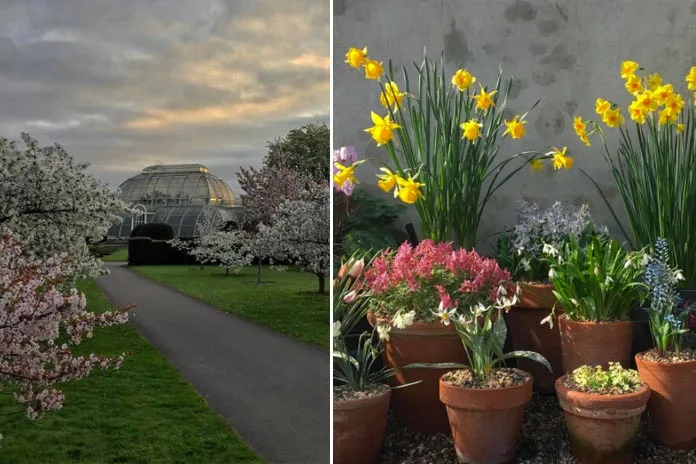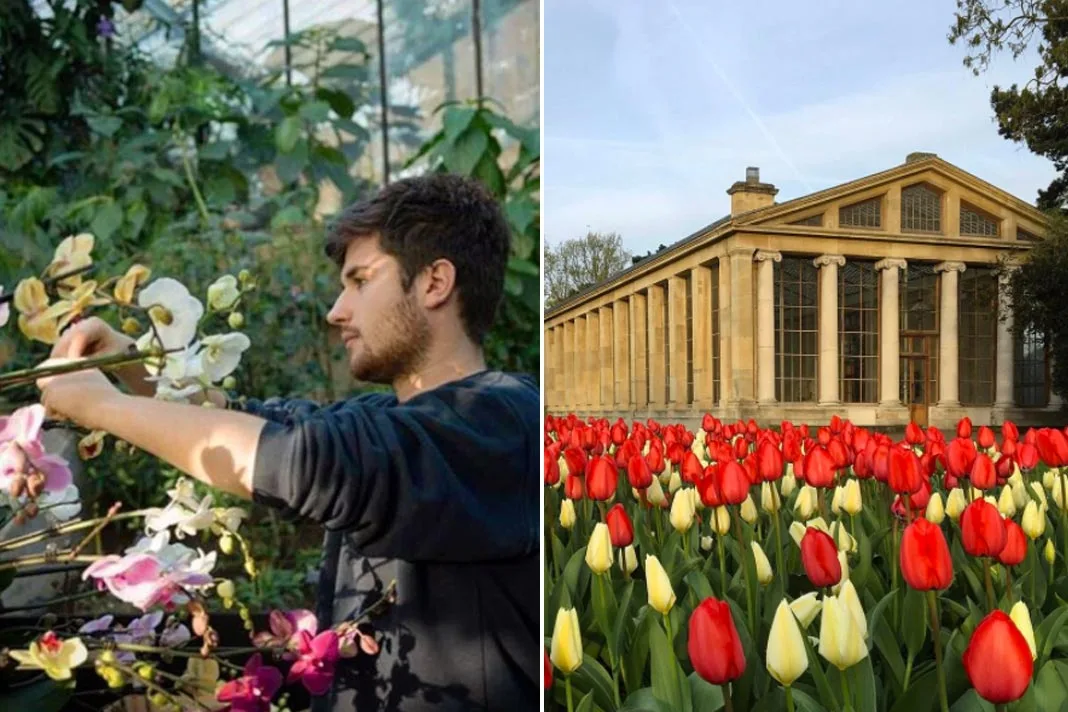As a botanical horticulturist at Kew Gardens, Alexander Hoyle maintains one of the most dynamic gardens in the world. Absolutely met him to find out what it’s really like to work with plants, day in and out
Interview Hannah Hopkins
What first inspired you to become a horticulturist?
I grew up in a small village in the Cotswolds where there was a rambling 17th-century manor house. It has superb gardens, and at the time the owners opened their garden for a few charity weekends a year. They put out the word for a Garden boy to help out and I was fortunate enough to be hired.
After graduating from horticultural college I knew I wanted to be a master gardener. I was fortunate enough to be given the opportunity to work at Aberglasney Gardens, in Carmarthenshire, West Wales for two wonderful years. My head gardener at the time was Kew trained and he encouraged me to go there to study. I moved to London and after three intensive, testing and captivating years I graduated the Kew Diploma with Honors. Kew approached me and offered me a permanent position helping to manage the Rose Garden, the Great Broadwalk Borders (Longest double herbaceous borders in the world), Palmhouse Pond and the Victoria Gate entrance. I accepted and haven’t looked back since.
What’s a typical day like at Kew?
No two days are really the same. The variables such as current projects, weather and seasonality dictate what happens on a day to day basis. Aesthetics and ornamental horticulture are very important to me. I strive to help maintain and raise the horticultural standards of Kew, particularly as Kew is a world heritage site. My areas are known as the ‘honeypot’ – close to the main entrance and the Palm House, so everyone passes through it. This year alone over 1.5 million people enjoyed visited Kew.
What’s the best project you have worked on since starting at Kew?
To date I have thoroughly enjoyed being part of the team that has completed the Great Broadwalk Project (world’s longest double herbaceous border) and the Hive. This year we are redeveloping the rose garden.
I really feel it is a very exciting time to be at Kew with many upcoming projects and developments including the new children’s garden, Order Bed landscape, the historic chinoiserie landscape around the pagoda (opening summer 2018) and the almighty Temperate House project (opening summer 2018).

What are the best and worst parts of your job?
Plants. Simply working with some of the most diverse and unrivalled plant collections in the world. Helping to develop, manage and maintain beautiful Kew, a world heritage site. And ultimately having an incredible work environment. Promoting a healthy lifestyle and better quality of life. I am fortunate enough to live just off Kew Green and the only vehicle I seem to use on a daily basis is a tractor. I count myself lucky practically living and working in the ‘countryside’. The weather can be a little challenging at times. But there are always jobs to do – planning, maintenance etc.
You have a large following on Instagram – do you think there’s been an increase in the number of young people interested in gardening and if so, why? Do you think social media has had an impact on this?
Gardening is really enjoying a renaissance with younger people. I think this is largely down to its image being improved drastically and people realising the joys of plants. They are vital to everyday living and enhance our lives so much. The ‘grow your own’ resurgence and everyone becoming more health conscious has a big part to play in this. Many friends want to improve their outdoor entertaining space with foliage or if they live in a flat they always want houseplant advice.
Social media and communication is a part of our lives and has helped create waves of interest in plants. Many of us are visually led and escapism is very important.
What do you think is the biggest threat to British (London) gardens/landscape and what can be done to combat it?
The lack of investment from local authorities and private individuals in the green infrastructure of our towns and cities. For example there is currently a large age gap between early/mid 20th-century street tree/ park plantings, resulting in their being a distinct lack of trees. ‘We’ are planting more (but not enough) and the establishment rate of new trees/plantings is poor. This is due to the lack of aftercare and foresight. We need more gardeners and funds to ensure a green, healthy London.
How would you describe your own garden style?
The Modern English Garden, because it encompasses our entire gardening history, containing the best of horticultural developments and features (herbaceous borders, kitchen garden, garden architecture, follies and garden buildings). It often has this wonderful balance of structure and architectural form mixed with soft and exuberant plantings. Gardens like Sissinghurst, and Great Dixter are of great inspiration to me. I find they have wonderful individual personalities, a sense of place and can be ever so romantic.
If you didn’t work in this industry what would you be doing instead?
I would like to be a specialist in the decorative arts or an antique dealer. I collect ceramics (earthenware, studio pottery) and architectural antiques (Urns and garden pieces).

What advice do you have for someone looking to start a career as a horticulturist?
Get to know your plants. Plant knowledge will always stand you in good stead. Gaining practical experience is just as important as gaining horticultural theory and qualifications, it’s important to strike the balance right. The Kew or RHS apprenticeships are very good. Be prepared to never stop learning and always asking questions.
What is your best advice for those looking to start gardening at home, where should they start?
Consider the scale and use of the space available. I would like to highlight the importance of seasonality and selecting plants that provide all year round interest. Try to have something in flower every week of the year. Look at the space available, considering light and aspect to help select plants that will thrive. It is important also to be realistic in creating something one can maintain.
Can you share your top tips for revamping an outdoor space on a budget?
• Keep it tidy and clean. Hedges and edges are very important.
• Get proportions of beds and hardscape right.
• Edit your existing garden and ask yourself is each and every plant earning its keep
• Keep it simple. Less really can be more in London gardens.
• Investigate and select the right plants to suit the site.
• Gravel is an excellent fix for hiding rough paving.
• Bulbs are a quick easy way to inject colour and interest into a space. instagram.com/kewplantsman
kew.org







